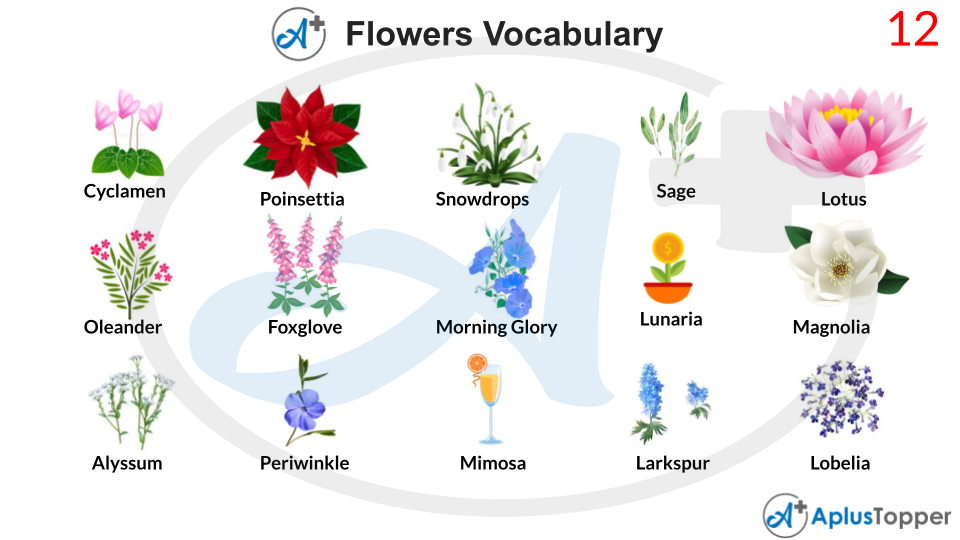Flowers Vocabulary: Flowers are one of nature’s most awe-inspiring masterpieces. Flowers have long been considered breathtakingly beautiful by practically every civilization on the planet. There are a lot of flower names that can make the list of the floral vocabulary words pretty long.
Today, we attempted to build a list of flower names vocabulary for you to take a look at and appreciate the abundance of our nature.
List of Flower Names Vocabulary words in English
Name of Flower Names Vocabulary words
Flowers represent the true essence of our planet’s magnificence, which is why we should plant as many flowers as possible to make our world more stunningly beautiful and wholesome.
Flowers are treasured by children as well, and they will look forward to reading about them and memorizing the names of flowers in English. This list of beautiful words related to flower vocabulary which will be extremely useful in strengthening children’s language skills.
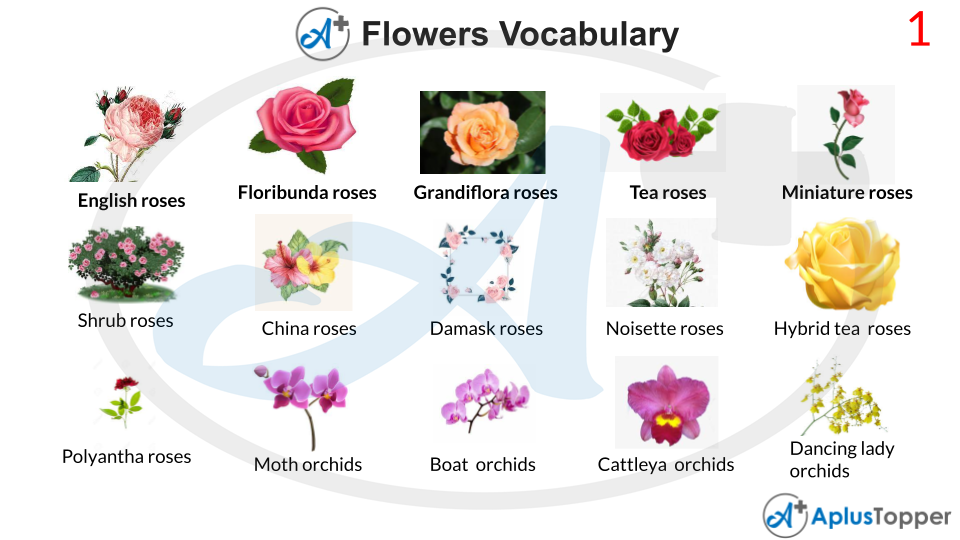
List of Flower Names
- Roses
- Orchids
- Daisies
- Lilies
- Iris
- Tulips
- Daffodil
- Poppy
- Hepatica
- Sunflower
- Calendula
- Bluebell
- Cherry blossom
- Orchid
- Canterbury Bells
- Peony
- Chrysanthemum
- Geranium
- Lily
- Snowdrop
- Cyclamen
- Lotus
- Dandelion
- Cosmos flower
- Crocus
- Balsam
- Tulip
- Marigold
- Barberry
- Basil
- Ageratum
- Bellflowe
- Jasmine
- Dahlia
- Pansy
- Blackeyed Susan
- Daisy
- Water lily
- Elastic Momordica
- Lavender
- Enchanter’s Nightshade
- Fieldrush
- Hazel
- Hibiscus
- Aster
- Rosemary
- Sage
- Browallias
- Lilac
- Hyacinth
- Rhododendrons
- Begonia
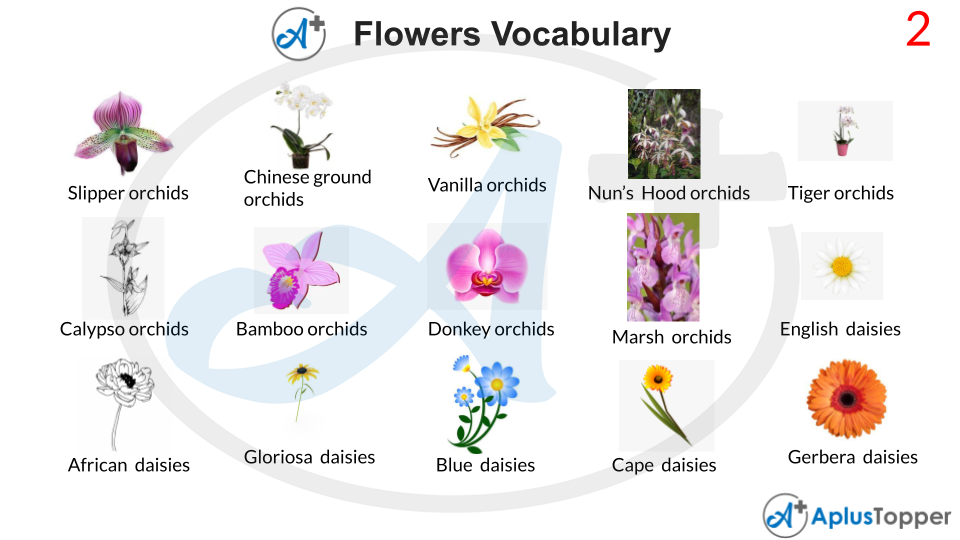
Description of the Flower Names Vocabulary Words
Roses
For a great many years, roses have retained the status of being the most recognized flower on the planet. The rose flower’s prominence may be attributable to its wide spectrum of hue, size, aroma, and other traits.
A bouquet of roses, or even a solitary rose, can revitalize a scene and make a significant contribution of vibrancy to it.
While it’s estimated that there are approximately 100 and 150 varieties of rose, there’s a considerable disagreement regarding how many there are because they’re just so strikingly similar. Rosaceae is a family, which features roses.
Orchids
Orchids are some of the most magnificent blossoms in the world, with fascinating hues and a wide spectrum of qualities. Orchids are gorgeous plants with over 30,000 distinct species and 200,000 hybridization versions, making them one of the world’s two greatest plant families.
Sympodial orchids, the more widespread of the two orchid varieties, grow horizontally and have bulb-like stalks, which are commonly referred to as pseudobulbs.
The vitamins and nutrients, and water in these pseudobulbs act as a backup reservoir for the plant.
Daisies
A daisy is a flower with a yellow core lined with white petals. It can, nevertheless, have petals of different hues, such as pastel pink or red. Daisies are a family of flowers that aren’t all the same.
They are based on two types of blossoms: disc florets and white ray florets, which look like flower petals.
Lilies
From June through August, most lilies bloom with enormous, aromatic blossoms. True lilies feature massive, flamboyant petals, which are either individual or in clusters, and lengthy, narrow leaves that extend down the course of the stem. They’re mainly composed of scaly bulbs.
Many of the species are scented and grow to be 30cm to 120cm tall, although some can expand to be much longer.
Iris
Iris flowers have remarkable blooming that is comprised of two types of petals: falls and standards. The bottom petals are created by the falls, which hang or slide. The standards are the flower’s topmost three petals. Irises are categorized into three kinds dependent on their petal attributes: bearded, crested, and beardless.
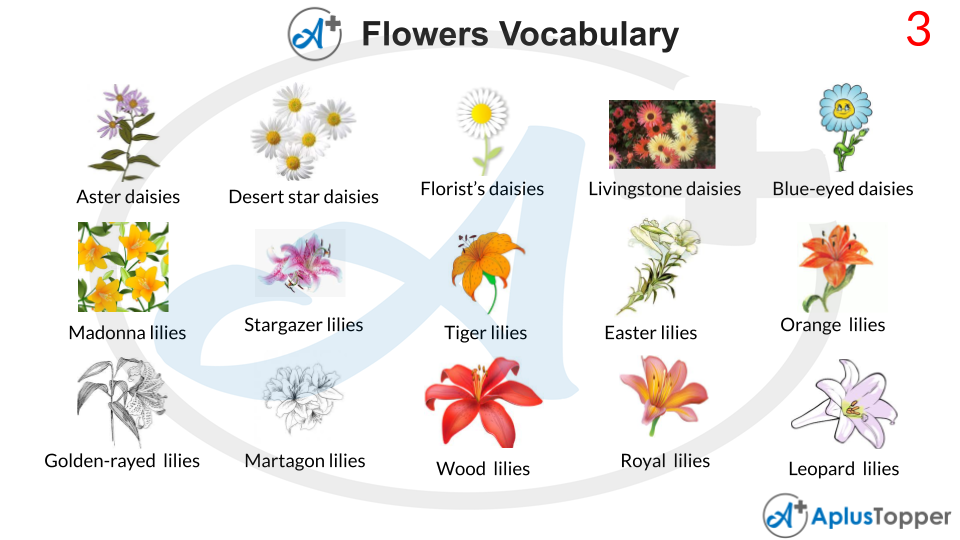
Tulips
Tulip flowers differ in hue from immaculate white across all degrees of yellow and red to brown and deepest purple to absolutely black, except perhaps deep blue. There have been approximately 4,000 horticultural variations identified.
There is a multitude of classification methods based on the date of bloom, flower form, and growing size of the plants.
Daffodil
The trumpet of a natural daffodil has a distinct coloration to the body of the flower, which is sunny yellow.
Its dazzling petals are typically white, yellowish, or even pale orange in color.
Poppy
The poppy flowers have a rose-like appearance and are pod-shaped; the bottom portion of the flower is indigo.
Hepatica
Hepatica flowers come in a variety of bright colors, notably azure, pinkish, purple, and white. It receives its name from the notion that the leaves of this plant closely resemble a human liver. They are members of the buttercup family.
Sunflower
The sunflowers are absolutely enormous, with a circumference of 10 to 30 cm. The blooms are bright yellow on the outside and brownish in the center.
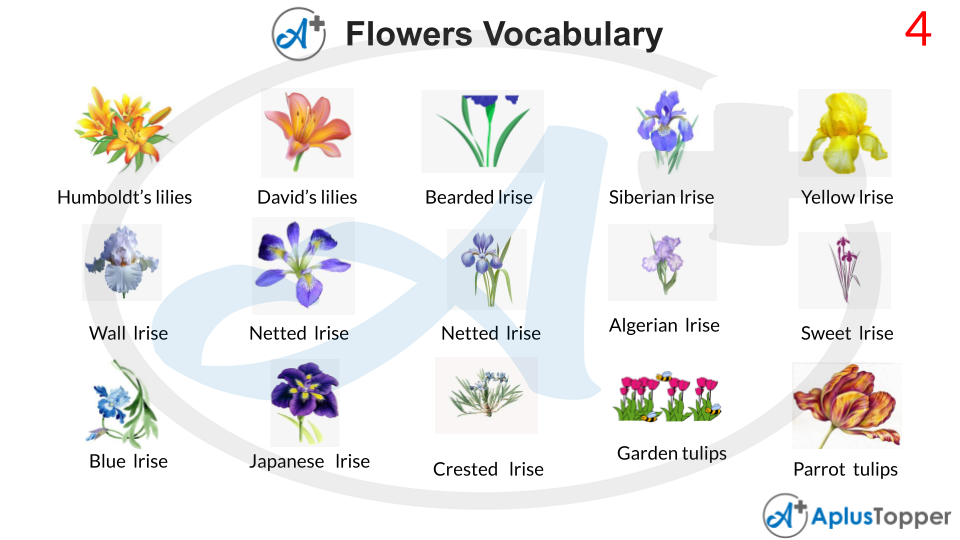
Calendula
Calendula is primarily cultivated for cut flowers, but it can also be used as a herbal remedy. They are featured in a spectrum of yellow and orange tones. It’s also recognized as a pot marigold, and it’s commonly marketed as a cream or oil.
Bluebell
The bell-shaped flowers have a brilliant blue tone. They can sometimes be light pastel pink or white in color.
Cherry blossom
Cherry blossoms, recognized in Japan as “sakura,” are just little pinkish blooms generated by cherry trees. They blossom in the spring and facilitate a rather sight, with a two-week bloom duration.
Orchid
The look of an orchid blossom varies significantly depending on the variety. In spite of the differences in the plants, there are several traits that they all maintain. Three petals and three sepals that are frequently mistaken for petals are among these features.
Canterbury Bells
Canterbury Bells is an antique flower that is well-known for its vibrant hues and is a beloved blooming in England. It’s an annual or biennial flower featuring bell-shaped blossoms in a spectrum of different shades from pink to purple to ivory.
Peony
The peony flower generates a positive vibes stream, and it comes in a wide variety of forms and tints. Each color has a strong identity, and this blossom is most usually encountered in white, golden, orange, purple, and pink.
Because this hue is generally monochromatic, there are a few alternatives with more colors.
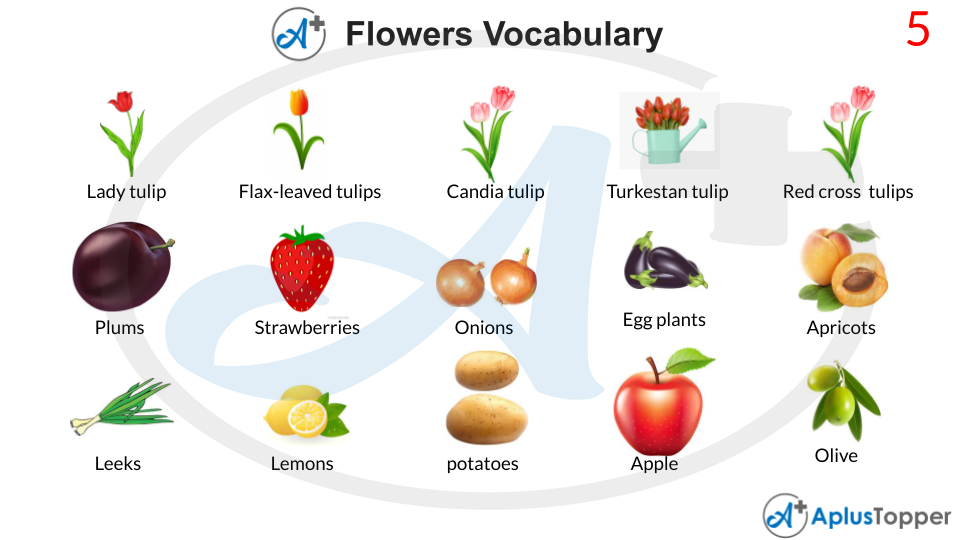
Chrysanthemum
Chrysanthemums are ideal for autumn gardens since they yield gorgeous flowers with a diverse spectrum of hues later on in the season than most of the other blooms. They’re typically referred to as Mums, and they’re an absolute favorite flower for Mother’s Day, which seems particularly appropriate!
Geranium
The blooms are five-petaled and appear in a spectrum of color schemes, including white, pink, purple, and blue, with characteristic veining.
Lily
Lilies, like orchids, are known for their beautiful appearance. They possess robust, almost leaf-like petals and brilliant or sharply contrasting hues. Lily flowers bloom at the top of elongated flower stalks that fluctuate in height based on the lily species, anywhere from less than a foot tall to more than ten feet tall.
A large percentage of lily stems are a tint of green, ranging from light to dark green, with some lilies having scarlet or purple stems.
Snowdrop
Snowdrops have a single tiny snowy flower that hangs down to the bottom. Three inner petals are enveloped by three outer petals as the flower blooms. The flower’s head will droop in cold conditions and regenerate when the weather gets warmer.
Cyclamen
The heart-shaped petals of the cyclamen make it an appealing flower. This perennial bloom is also a fantastic food source for both insects and mammals.
Lotus
The gorgeous aquatic flower lotus blossoms from the thickest and heaviest soil. It’s a flower that blossoms year after year and has truly phenomenal geometry and colors. The petals are an extremely vivid pink color, although they can also be ivory.
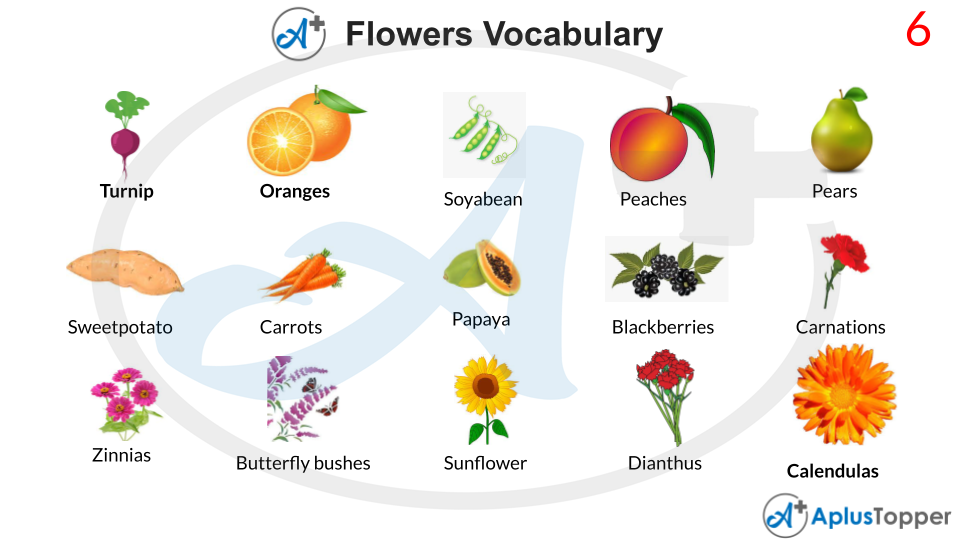
Dandelion
The dandelion comes in a variety of forms. They are incredibly attractive and stunning.
Cosmos flower
The cosmos flower, which belongs to the sunflower family, comes in a wide variety of pinks that persist all season. The distinct canopy makes for an excellent foreground for other, smaller plants.
Crocus
Crocus blossoms are approximately 7 cm in diameter. Saffron petals vary in hue from white-blue to dark azure or purple. On the base of the flower, purple streaks traversing the length of the petal are vividly apparent.
Balsam
Balsam Is a vintage annual that was prominent in Victorian landscapes. The touch-me-not flower is yet another name for these impatiens.
Tulip
The tulip is a stunning bulbous plant that blossoms in a breathtaking array of colors during the early spring. It’s a gorgeous bloom that shoots to the sky from the summit of a strong stem.
Tulips come in a plethora of hues, including jet black, ivory, yellowish, red, orange, lavender, and pinkish.

Marigold
The preponderance of marigold blossoms is golden to bright orange in coloration, although there are several variations, such as yellow with red stripes, bright orange lobes with golden margins, and crimson with yellow smudges.
Barberry
Yellow flowers, crimson red or dark berries, and tiny rounded squishy leaves characterize the barberry shrub.
Basil
The basil plant begins to bloom as it ages. The small flowers, which are primarily white or violet, emerge in a spiky arrangement from the stem’s middle.
Ageratum
Ageratum is a hardy perennial that is attractive in many landscapes. Powderpuff blossoms are a hallmark of these gorgeous blue annuals.
Bellflower
Bellflowers appear in a variety of colors, including pink, blue, lavender, and white. They often reach a maximum of 6 inches to two feet.
Jasmine
Jasmine is a popular aesthetic flower and is considered highly desirable as a cut flower, with gorgeous white flowers and a dainty, delicate look. Many gardeners plant jasmine immediately outside their room window because of its relaxing and rejuvenating aroma.

Dahlia
Dahlia blooms come in a myriad of tones, namely white, yellow, orange, red, pink, and purple. Flowers can come in distinct sizes from 5 centimeters to 30 centimeters in diameter, depending on the variety.
The capitulum, or flower head, is enveloped by numerous delicate petals that round a prominent yellow core.
Pansy
The pansy belongs to the Viola family and is immediately distinguishable. The five-petaled circular blooms come in a multitude of colors ranging from vibrant pink to pristine white. Flowers can be a single coherent color or contain black lines fanning away from the middle.
Blackeyed Susan
The sunflower family’s Blackeyed Susan is famed for luring butterflies and bees. It is a hardy plant that blossoms well in gardens as well as pastures.
Daisy
A daisy is made up of two types of blooms: disc florets and white ray florets. Daisy flowers are made up of white petals with a yellowish core; however, they can also be pink or red in hue.
Water lily
Water lilies are a collection of aquatic plants that appear in a number of different forms, each of which has a distinctive shape and aesthetic. Water lilies blossom in a single complex and magnificent blossom all through the spring and summer.
Water lily bloom hues span from white to yellow to azure, magenta, and red, with specific species changing hue from light to dark as the flowering season proceeds.
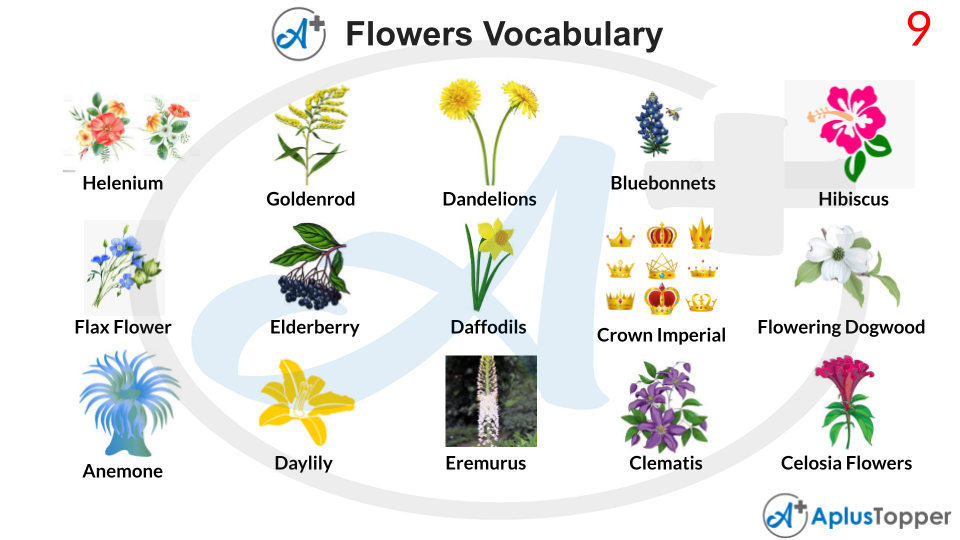
Elastic Momordica
When the plant is new, it produces extremely pale or creamy white monocoic flowers and emerald berry-like fruits that develop into a yellow-orange color.
Lavender
This tiny bush has grooved, silvery-green foliage that gives it a delicate look. In the summertime, this plant yields slender spikes of fragrant blue-purple blossoms.
Cone-shaped groupings of buds open to small tiny, intense violet blossoms capped with gorgeous white petals that bloom to pastel pink. It’s a wonderful asset to the garden owing to its distinctive blooms and wonderfully fragrant silvery foliage.
Enchanter’s Nightshade
Broadleaf Enchanter’s Nightshade is another name for Enchanter’s Nightshade. Enchanter’s Nightshade is a small tiny but charming plant that blooms along woodland trails in early to mid-summer.
The blossoms are grouped on an elongated spike-like structure, but they are modest.
Fieldrush
When the brownish, tassel-like flower heads fully bloom in the springtime, most people will actually notice that it is prominent on the lawn. In a weed-free lawn, they, together with all the coarse foliage, might be unappealing.
The promising strategy to keep field woodrush under management is to minimize ph of the soil.
Hazel
Although hazel flowers need to be pollinated by pollen grains from other hazel trees, it is monoecious, meaning both male and female blossoms can be housed on the same tree.
From mid-February, the yellow male blossoms emerge before the foliage and hang in bunches. Female flowers have scarlet patterns and are relatively small and bud-like.
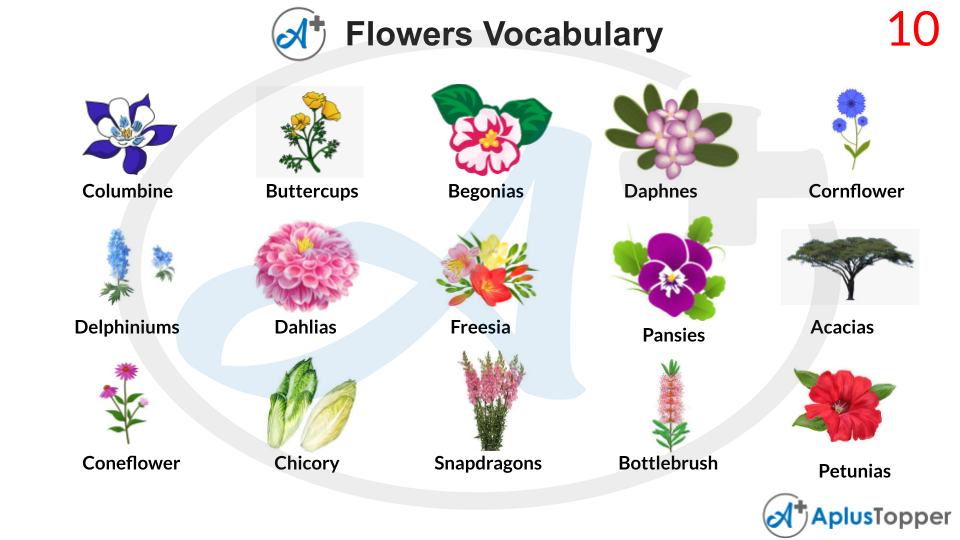
Hibiscus
Hibiscus blossoms include conventional floral architecture, but they also have unique attributes, such as extended staminal columns. A green arrangement at the top of the stem may be seen at the base of every hibiscus blossom. The flower is extremely attractive in and of itself.
Aster
When most other perennials have withered, Aster blossoms in late summer to late October, they come in different shapes and dimensions, from those that scarcely hit the floor to ones that reach 6 feet tall.
The daisy-like flowers appear in a variety of hues, with purple, lavender, fuchsia, scarlet, turquoise, and white being the most prominent.
Rosemary
Rosemary, or Rosmarinus officinalis, is a fragrant, resistant, evergreen shrub with highly heavily scented leaves. Bees are drawn to the tiny azure blossoms that are produced in axillary clusters.
Rosemary is resilient to most parasites and crop diseases, even though in tropical environments, it is susceptible to various fungal infections such as powdery mildew.
Sage
Sage plants are a diverse family of flowering plants that can range from woody shrubs to fragile herbs. In hot places, many are perennials, but in cooler environments, they are commonly grown as annuals. The most often observed blooms are crimson to purple in color.
Browallias
Browallias are rich purple and azure blossoms that work beautifully in pots or as a boundary when grown in a sequence. Bush violet is the common nickname for this perennial.
Lilac
Lilacs are instantly spotted by their elongated, cone-shaped florets that are packed in delicate cylindrical blossoms. Lilacs are best renowned for their bright purple blossoms, but there are lots of different types available with a lighter purple, white, azure, pinkish, and sometimes even buttery golden blossoms.
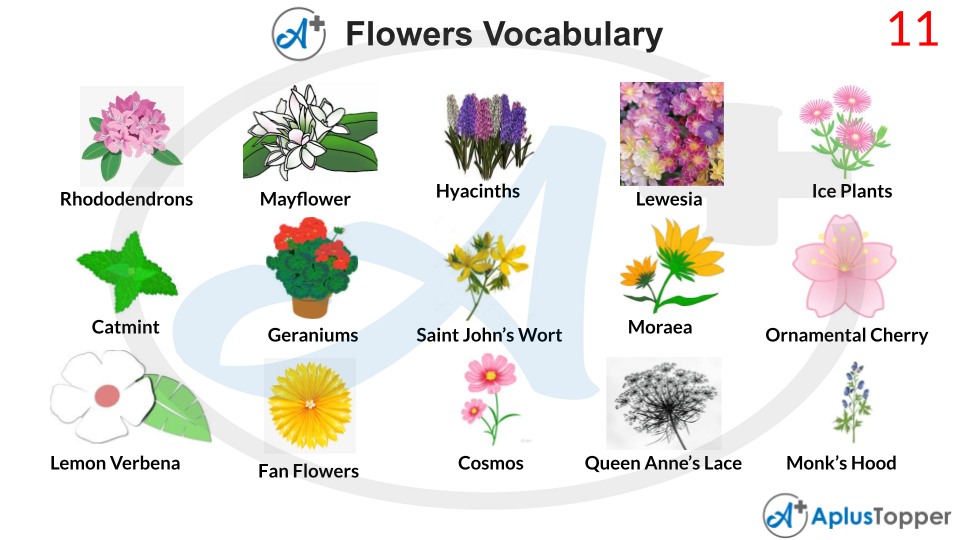
Hyacinth
Hyacinth flowers have a fascinating history to complement their unique beauty. They also furnish a slew of medical advantages. Hyacinth flowers are allied to asparagus and available in a multitude of tints, including rich indigo, vibrant pink, pastel pink, violet, and white.
Rhododendrons
The cylindrical cone or bell-shaped blossoms are generally. Smaller azalea leaves are normally sharp and extremely thin, whereas rhododendron leaves are generally large and velvety. Rhododendrons, which blossom in the spring, have been produced for multiple generations.
It’s straightforward to comprehend why—their vibrant hues and general aesthetic attract a lot of attention.
Pink, crimson, white, yellow, and purple is really just a handful of the floral hues available.
Begonia
Begonia is a simple-to-grow flower that thrives in a wide range of environments. They come in a multitude of shapes, dimensions, and tints. It’s a plant that survives for a long period of time.
